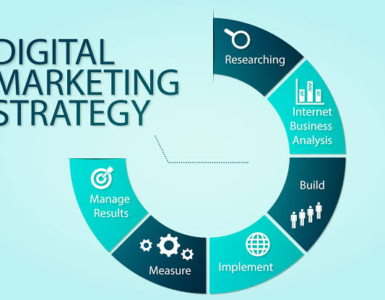Hyperautomation refers to the idea of automating anything that can be automated in an organization. Enterprises that embrace hyperautomation have the goal of streamlining processes across all their businesses by use of robotic process automation, artificial intelligence (AI), including other technologies to operate without human involvement.
Hyperautomation is an emerging automation approach that has been rated among the top ten strategic technology trends by Gartner. A 2021 survey by Gartner showed that 85% of businesses were willing to either increase or maintain their investment in hyperautomation in the coming 12 months, and over 56 percent already had four or more active hyperautomation processes. Hyperautomation grants organizations transformation, enabling them to function more streamlined manner, usually leading to lowered costs and a greater competitive position.
How Can Businesses Begin Their Hyperautomation Journey?
- Collect insights on workflows, procedures, and environment. Through process mining, you can research the operation of existing processes to identify any latency, gaps, and bottlenecks where digital process automation can take effect.
- Establish the structured and unstructured data, including other inputs that will be used to complete the processes.
- Project the results in terms of return on investment (ROI) and efficiencies.
- Identify the automation technologies and platforms that best address your needs, possibly exploiting algorithms and tools in use.
- Automate complicated business technology procedures and roles, usually even automating the automated to achieve better efficiencies and increased cost reductions.
- Exploit AI tools to work on the identified tasks and technologies such as natural language processing (NLP), OCR, and cognitive learning. No-code or low-code technologies that employ a graphical user interface when it comes to the configuration are used to simplify the automation process needing faster deployment and less technical expertise.
What Tools Can You Use in the Hyperautomation Process?
- Task Capture
Task captures are recorders that are placed on employees’ computers and manually capture the procedures and roles followed by your employees in identifying good RPA opportunities and generating the first step in the automation process.
- Task Mining
Task mining involves software that goes through event logs and identifies yet-to-be-discovered procedures and procedure variants that might work well for automation.
- Process Modeling
The main repository allows you to store all your as-is processes. It must also offer a process editor which allows your stakeholders to optimize and design your future automated processes. Moreover, any vigorous process modeling solution enables you to connect processes to all crucial information such as regulations, legacy systems, and more to promote change management and automation governance.
- Analytics and Reporting
Given that a large portion of RPA platforms offers monitoring and analytics features, this capacity is fundamental in measuring your ROI and obtaining insight into your automated business processes, like which are running the most, when, and which are prone to errors.
How To Differentiate Between Robotic Process Automation (RPA) and Hyperautomation
It is usually thought that hyperautomation competes with RPA; however, these two ideas do not relate in a competing manner; instead, RPA is a piece of the wider hyperautomation puzzle.
RPA relates to the automation of simple, repetitive, rules-based tasks. Most of the current automated procedures used by organizations in their production processes are not end-to-end, multi-layered processes; they are sublayers of decomposed, much wider processes.
The best instance where the organisation uses common automation is the extraction of data from invoices. In such cases, a bot obtains particular elements of customer information from invoices and keys them into a recording system. This process of data extraction is a sub-process of a wider one that involves all the steps for invoice processing. While RPA ensures that the task is performed faster with a high degree of accuracy, the whole process is yet to be automated.
Under a hyperautomation model, every segment of invoice processing that could be automated through the various technologies of the hyperautomation tool-chain would be automated. For instance, a task capture tool might be used in defining the flow followed by employees in processing their invoices.
Why Is Hyperautomation So Important?
Through hyperautomation, organizations can obtain a structure for widening, integrating, and maximizing enterprise automation. It adds to the success of RPA tools and addresses their limitations.
RPA can attribute its sporadic growth to other automation technologies, to its simplicity and intuitive nature. For instance, given that RPA reflects how individuals interact with applications, workers can automate a segment of their work by recording how they perform such tasks. And the metrics are used by companies in determining the performance of their employees in such tasks.
Hyperautomation compels businesses to consider the various types and maturity of technologies and processes necessary in scaling automation initiatives. It focuses on how businesses can create a process for automating automation. This sets aside automation from other automation procedures that only focus on the improvement of automation tools or from the automation concepts such as intelligent process automation (IPA), digital process automation (DPA), and cognitive automation, which focuses on automation itself.
What Are The Challenges With Automation?
Hyperautomation is a fairly new concept, and businesses are in the early adoption stages where they are still decoding its best application for their workplaces. These are some of the biggest challenges.
- Tools
There is no one silver bullet in hyperautomation software. Even though top automation providers are widening their hyperautomation capabilities, enterprises will struggle to ensure these tools function and are smoothly adopted.
- Insufficient Data
The tools used in evaluating the cost and possible value of automation are still in the initial stages.
- Requires Manual Augmentation
Only about 40 to 60 percent of the code for automation could be generated automatically using the existing tools. A lot of human touches are still needed and require budgeting when setting up a vigorous automation process at scale.
Hyperautomation’s goal is to take advantage of the data that is collected and generated by digitized processes, not just to save money, increase productivity, and achieve efficiencies through automation. Companies can use that data to make more informed and timely business decisions.






